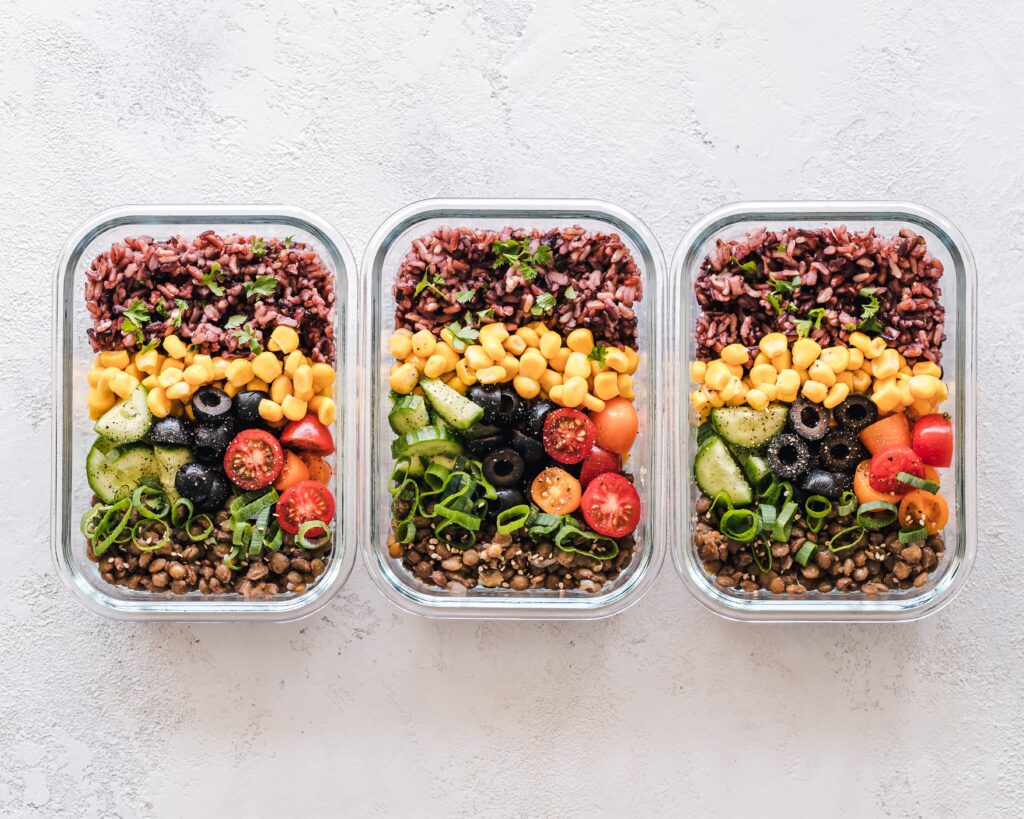
About 36% of plastic pollution in the oceans consists of a wide variety of food contact materials. Food contact materials are all materials that come into contact with our food before it is consumed. This includes packaging for transport and sale, home storage, but also any cooking utensils, as well as crockery, cutlery and to-go packaging. Particularly plastic food contact materials can pose a danger to the environment as well as a health risk to us as consumers.
What is our plastic packaging made of?
Packaging is often necessary to guarantee the shelf life of a product and to protect it from dirt and damage. Plastic in particular is popular because it can be airtight or water-repellent, for example, depending on the need and production. These functions can only be achieved by using many chemicals, some of which can be harmful to our health. Depending on the desired function, additives such as plasticisers, stabilisers or dyes are added to the basic material (brittle plastic). This is how, for example, hard and soft plastic or thin cling film are created. One type of plasticiser is phthalates, which, if we ingest them, can negatively affect our hormone system. They are often used in plastic packaging to make it soft and pliable and are, among other things, used in PVC films for packaging fresh meat.
Plastic is even hiding in places where we do not suspect it – and hazardous chemicals often come along with it. Cans, for example, have an inner plastic coating to prevent corrosion of the metal, but it contains the chemical bisphenol A (BPA). BPA is also a “hormone disruptor” and can cause reproductive and developmental disorders.

How do hazardous chemicals get into our bodies?
The additives are not firmly bound to the molecular structure of the plastic and can therefore dissolve under certain conditions and immigrate into our food. This often happens when they come into contact with hot and greasy food, but also through wear and tear or through the mere contact of food and plastic. We then absorb the hazardous chemicals into our bodies through eating. While some are harmless concerning our health, others, such as hormone disruptors, are classified as “substances of very high concern” (according to legislation), some of which pose significant health risks to us.
What is it about the wooden spoon and the frying pan?
Not only packaging, but also cooking utensils made of plastic, such as the cooking spoon, can contain dangerous chemicals that can dissolve, especially when they come into contact with hot food. The practical non-stick pan contains plastic in the form of a Teflon coating. When heated to high temperatures, the pan releases toxic fumes that cause nausea and dizziness when inhaled.
Why don’t legal guidelines protect us?
The legal guidelines regarding the use of hazardous chemicals in food contact materials are not strict enough to exclude health risks. There is a possibility that small amounts of hazardous chemicals from different products (not only food contact materials) accumulate in the body and react with each other. Some additives have already been detected in the blood, breast milk and tissues of people worldwide.
How can I protect myself?
Those who do not want to do without their plastic container should pay attention to the correct use in order to minimise the health risk. For example, hot or greasy food should not be put into plastic packaging. The pictograms indicate whether a plastic container is suitable for this or other purposes, such as freezing or washing in the dishwasher.
However, you are on the safe side if you avoid plastic in general. If possible, buy unpackaged food or fill your groceries into glass, ceramic or stainless-steel containers as soon as you get home. Instead of cling film, use oilcloth to wrap food.
Also use wooden or stainless-steel cooking utensils and avoid pans with plastic non-stick coatings. Instead, use pans made of cast iron, ceramic or stainless steel.
First, make an inventory of the materials and items in your kitchen and replace the sources of hazardous chemicals step by step. It is very easy to get started! Let’s do it together this week!
Author: fee.widderich@bef-de.org

